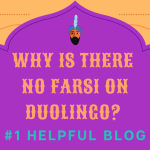Are you planning a trip to Hong Kong or South China? Or do you want to impress your Cantonese-speaking friends or colleagues? Regardless of your reasons, learning conversational Cantonese phrases is a great way to connect with the locals and make your experience more enjoyable.
Cantonese, also known as Yue, is a dialect spoken by over 55 million people in South China and is widely used in the world’s largest city, Hong Kong. It’s known for its unique tonal system, which can make it challenging for English speakers to master, but with a bit of practice, you’ll be surprised at how much you can pick up.
Today, we’ll go over some of the most common Cantonese phrases every traveler needs to know for travel, work, or just to impress friends. So, let’s dive in!
The Importance Of Learning Conversational Cantonese Phrases
Perhaps by now, you’re wondering why exactly you should learn conversational Cantonese phrases, right? Well, there are actually a lot of reasons why! Here are some to convince you!
- Effective communication: No more struggle to get your point across or rely on gestures and common expressions. If you learn Cantonese phrases, it will go a long way in bridging language barriers and facilitating smooth conversations.
- Shows respect for the culture and people: Helps you demonstrate a willingness to understand and connect with the community, which can build strong relationships and cultural bridges.
- Enhance your overall language learning experience: deepens your understanding of the Cantonese language and culture.
- Improves professional opportunities: Beneficial for those working in industries with a significant Cantonese-speaking client base or for those looking to expand their business in Cantonese-speaking regions.
- Travel convenience: Makes your travels more enjoyable and convenient.
- Cultural enrichment: Provides a deeper understanding and appreciation of Cantonese culture, history, and traditions.
Basic Grammar Rules And Sentence Structures In Cantonese
Cantonese grammar follows many of the same rules as other Chinese dialects, with a few key differences. Some of the basic grammar rules to keep in mind when learning Cantonese include:
- Word order: In Cantonese, the word order is subject-verb-object.
- Particles: Cantonese uses particles to indicate the tone of a sentence, similar to the use of punctuation in English.
- Tones: Cantonese is a tonal language, meaning that the tone in which a word is spoken can change its meaning. Originally, there were nine tones in Cantonese, and it’s important to practice speaking with the correct tones to be understood.

Helpful Conversational Cantonese Phrases For Travelers
Greetings & Basic Phrases
Greetings and basic phrases form the foundation of any language. Whether you’re starting a conversation with someone for the first time or just saying hello to a friend, a proper greeting is essential.
| English | Cantonese | Pronunciation |
| Hello | 你好 | Nei5 hou2 |
| Good morning | 早晨 | Zou2 san1 |
| Good afternoon | 午安 | Ngo5 on1 |
| Good evening | 晚安 | Maan5 on1 |
| Good night | 晚安 | Jou2 san1 |
| How are you? | 你好嗎? | Nei5 hou2 ma1? |
| I’m fine, thank you. | 我很好,謝謝。 | Ngo5 han2 hou2, ze6 ze6. |
| Nice to meet you. | 很高興見到你。 | Han2 gou1 hing3 gin3 dou3 nei5. |
| Goodbye | 再見 | Zoi3 gin3 |
| Can you? | 可唔可以? | Ho2 m4 ho2 ji5? |
| Excuse me | 唔該 | M4 goi1 |
| Thank you | 謝謝 | Ze6 ze6 |
| Sorry | 對唔住 | Dui3 m4 zyu6 |
Conversation Starters
Starting a conversation can be nerve-wracking, especially if you’re speaking in a foreign language. No worries, these daily conversation starters will give you the confidence to get started.
| English | Cantonese | Pronunciation |
| What’s your name? | 你叫甚麼名字? | Nei5 gaau3 sam6 mo1 ming4 zi6? |
| How old are you? | 你幾歲? | Nei5 gei2 sai3? |
| Where are you from? | 你來自哪裡? | Nei5 loi4 zi6 naa1 lei5? |
| What do you do for work? | 你是做甚麼工作的? | Nei5 si6 zou6 sam6 mo1 gung1 zok3 dik1? |
| What are your hobbies? | 你有甚麼愛好? | Nei5 jau5 sam6 mo1 oi3 hou2? |
| Do you like Cantonese food? | 你喜歡廣東菜嗎? | Nei5 hei2 wong4 gwong2 dung1 choi3 ma1? |
| What’s your favorite food? | 你最喜歡的食物是甚麼? | Nei5 zeoi1 hei2 wong4 dik1 sik6 mat6 si6 sam6 mo1? |
| Do you like to travel? | 你喜歡旅遊嗎? | Nei5 hei2 wong4 leoi5 jau5 ma1? |
| I don’t understand. | 唔好意思。 | M4 hou2 ji3 si1. |
| I don’t speak Cantonese. | 我唔識講粵語。 | Ngo5 m4 sik1 gong2 jyut6 jyu5. |
Food And Dining
Food is an integral part of any culture, and it’s no different in Cantonese-speaking regions. Here are some Cantonese restaurant vocabularies that will make your dining experience seamless.
| English | Cantonese | Pronunciation |
| What would you like to eat? | 你想吃甚麼? | Nei5 soeng2 hek3 sam6 mo1? |
| I would like some noodles. | 我想要一些麵。 | Ngo5 soeng2 jiu3 jat1 siu2 min6. |
| Can I have the menu, please? | 可以給我菜單嗎? | Ho2 ji5 kap1 ngo5 coi4 dyun6 ma1? |
| How much does it cost? | 多少錢? | Do1 siu2 cin2? |
| Can I have a drink? | 可以給我一杯飲料嗎? | Ho2 ji5 kap1 ngo5 jat1 bui1 jam2 lou6 ma1? |
| Can I have some chopsticks? | 可以給我筷子嗎? | Ho2 ji5 kap1 ngo5 faai3 zi2 ma1? |
| Can I have a fork and knife? | 可以給我叉子和刀子嗎? | Ho2 ji5 kap1 ngo5 caa1 zi2 woi4 dou2 zi2 ma1? |
| Is this vegetarian? | 這是素的嗎? | Ze1 si6 so2 dik1 ma1? |
| Do you have an English menu? | 你有英文嗎? | Nei5 you3 ying1 man4? |
| Can you give me a discount, please? | 可唔可以俾個折頭我呀? | Ho2 m4 ho2 ji5 bei2 go3 zit3 tau4 ngo5 aa3? |
| I’m sorry, I’m not familiar with it. | 唔賴客喜。 | M4 sai2 haak3 hei3. |
Shopping And Transportation
Whether you’re shopping for souvenirs or just trying to get around, these useful phrases will come in handy.
| English | Cantonese | Pronunciation |
| How much does this cost? | 這個多少錢? | Ze1 go3 do1 siu2 cin2? |
| Can you help me carry this? | 可以幫我攜這個嗎? | Ho2 ji5 bong1 ngo5 hui1 ze1 go3 ma1? |
| Where is the bus stop? | 巴士站在哪裡? | Ba1 si1 zaam1 zoi6 naa1 lei5? |
| How much is the fare? | 費用是多少? | Fei4 jung6 si6 do1 siu2? |
| Can I take a taxi? | 可以搭的士嗎? | Ho2 ji5 daap3 dik1 si1 ma1? |
| Where do I get off? | 我在哪裡下車? | Ngo5 zoi6 naa1 lei5 haa4 ce1? |
| Can I take the subway? | 可以坐地鐵嗎? | Ho2 ji5 co4 dik6 tit3 ma1? |
| Where is the nearest train station? | 最近的火車站在哪裡? | Zeoi1 gan6 dik1 fo2 ce1 zaam1 zoi6 naa1 lei5? |
Language Tip!
Now that you know the basic conversational phrases, there’s one thing that you must also focus on: Tones! Cantonese has six basic tones, each of which conveys a different meaning. These tones are high-level, mid-rising, low-falling-rising, high-falling, low-rising, and high-falling-rising.
To help you understand the different tones, let’s take a look at an example: the word “ma” can mean either “horse” or “mom,” depending on the tone you use to say it. If you say “ma” with a high-level tone, it means “horse,” but if you say it with a mid-rising tone, it means “mom.”
It’s essential to pay close attention to the Chinese characters and tone when speaking Cantonese, as it can significantly affect the meaning of the words you use. So, practice your tone pronunciation to avoid misunderstandings and communicate effectively in this beautiful language.

Start Learning Cantonese With The Ling App
In general, learning Cantonese can be a fun and fulfilling experience. With the right tools, it can be easier than you think. Our advice? Try out the Ling app!
By using Ling, you’ll have access to a wide range of resources to help you improve your Cantonese skills and immerse yourself in the language. With interactive games, updated language-learning content, and the ability to learn right from your phone, there’s never been a better time to start speaking Cantonese.
So why wait? Join Ling today and download it from the App Store and Google Play now!































































